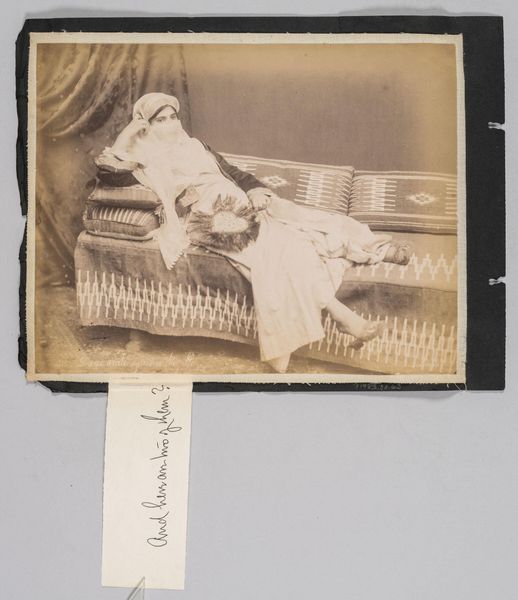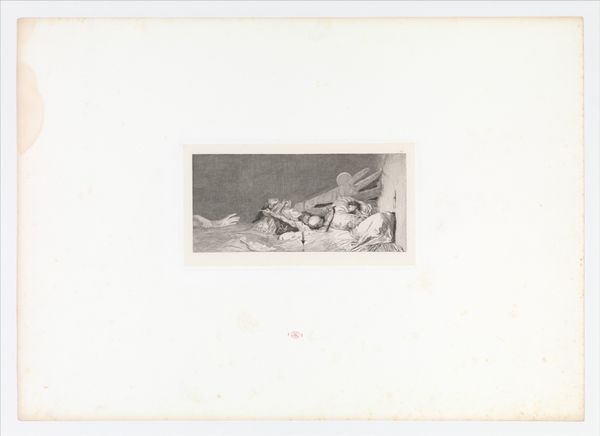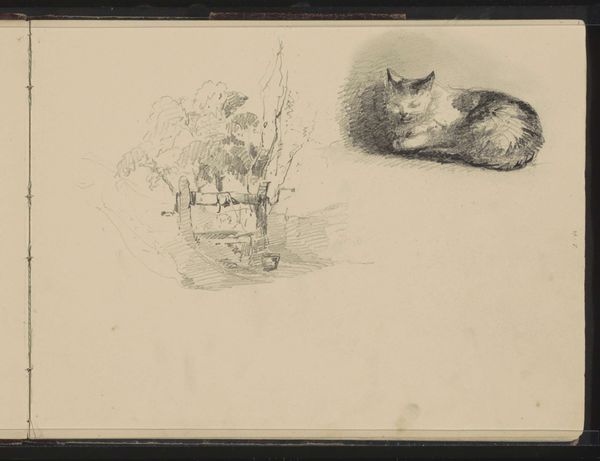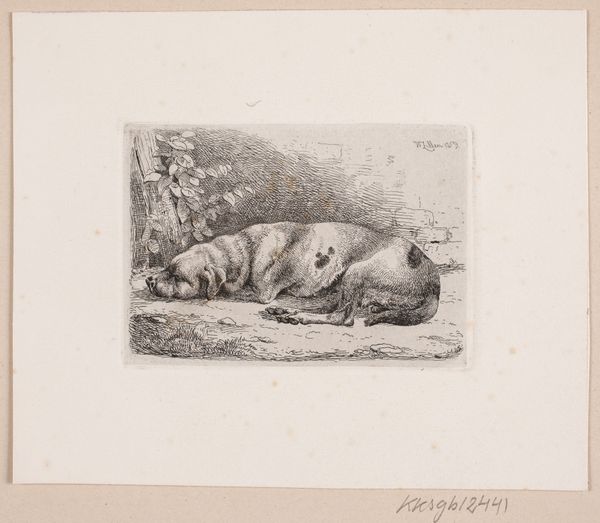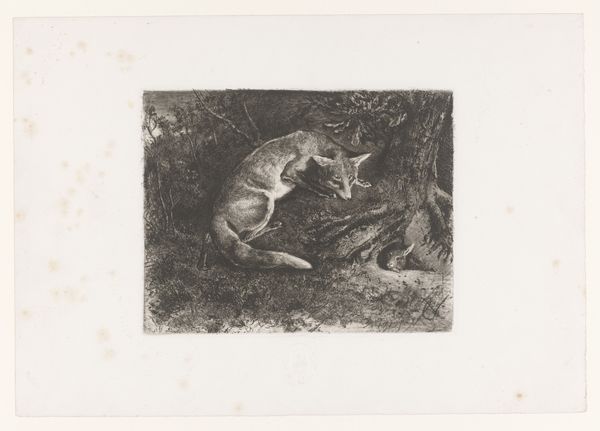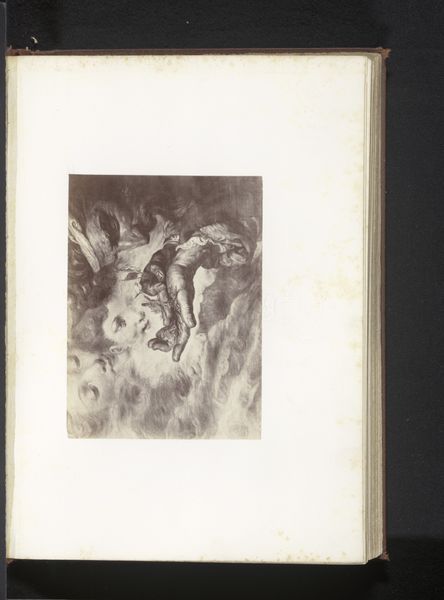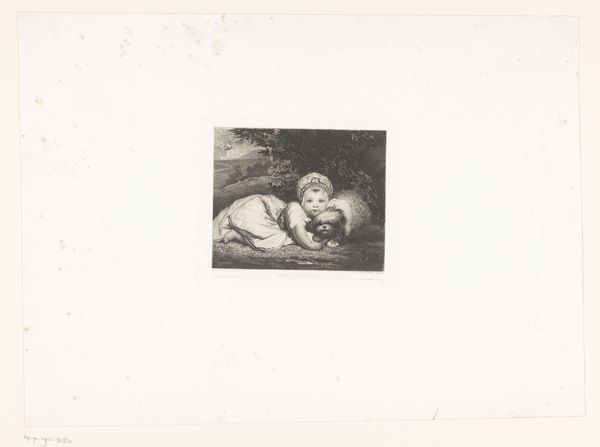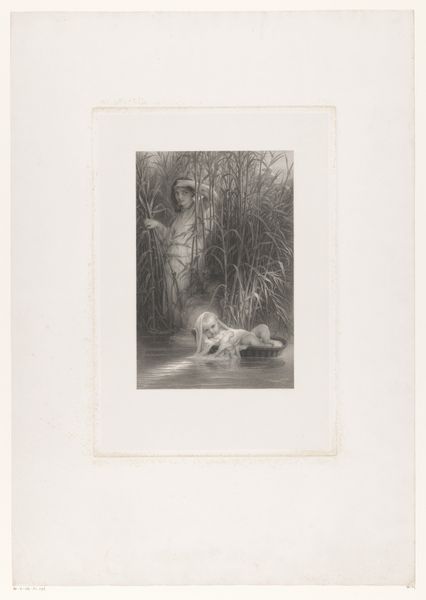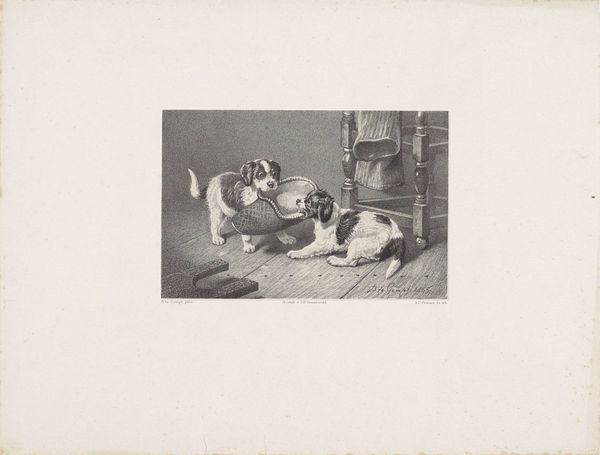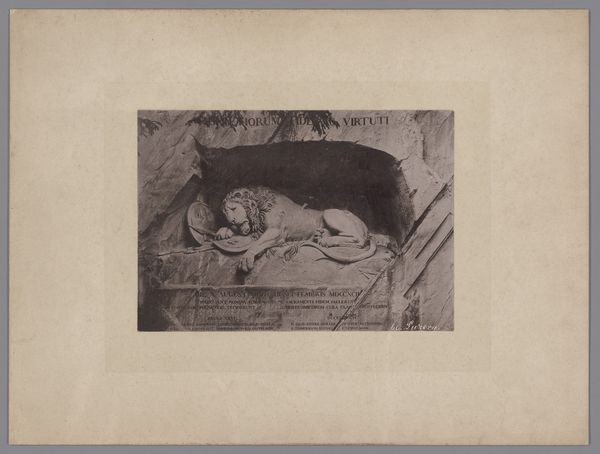
print, paper, photography
#
portrait
#
16_19th-century
# print
#
paper
#
photography
#
england
#
portrait drawing
Dimensions: 7.7 × 10.3 cm (image/paper)
Copyright: Public Domain
Curator: Looking at this lovely little work from the 1850s titled "Mrs. Craik's Cat", currently residing at the Art Institute of Chicago, it strikes me how much it encapsulates Victorian domesticity. Editor: Well, the first thing that jumps out is the subdued, almost ghostly quality of the print itself. The paper has clearly aged. I'm curious about the photographic process they used back then; it gives everything a dreamlike aura. Curator: It's certainly reflective of its era. The artist chose to represent not just a cat, but a cat belonging to a "Mrs. Craik," imbuing the piece with an almost tangible sense of belonging and established identity. The inclusion of the small toy mouse feels significant as well; a little symbol of potential for mischief contained within the domestic space. Editor: Absolutely. It makes me wonder, though, about access to this kind of image at that time. How reproducible was this photograph? The preciousness of it now—given its age and survival—likely wasn't its original function. It was possibly one of many, hinting at burgeoning photographic consumption amongst a specific social class in England. Curator: Good point. While appearing simple, this image draws on layers of Victorian values – the importance of pets, domestic comfort, and a woman's role within the household. The cat, in many cultures, represents both independence and companionship, here settled peacefully. The artist uses it almost as a representation of feminine contentedness within the home. Editor: And beyond representation, what material significance did it hold? Photographs were a luxury; think of the silver required for plates. Also, there is the cultural desire and rise of new technologies allowing you to capture likenesses for oneself. To own such an item signifies not only sentimentality but a degree of economic comfort. Curator: The composition feels equally pertinent, centering comfort. Editor: Yes, and for a Materialist lens like mine, it brings forward considerations for process, medium, class and culture as well! Curator: Thinking more about symbols in time is how I see an evolution of expression. Editor: Absolutely. Every material tells a story about labor, culture, and its very own history of creation.
Comments
No comments
Be the first to comment and join the conversation on the ultimate creative platform.
